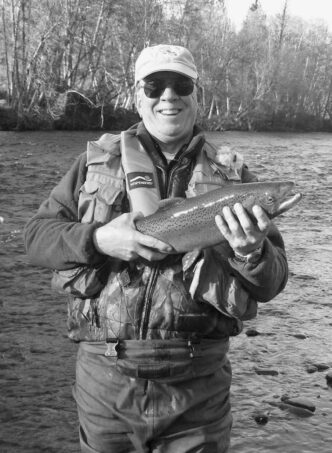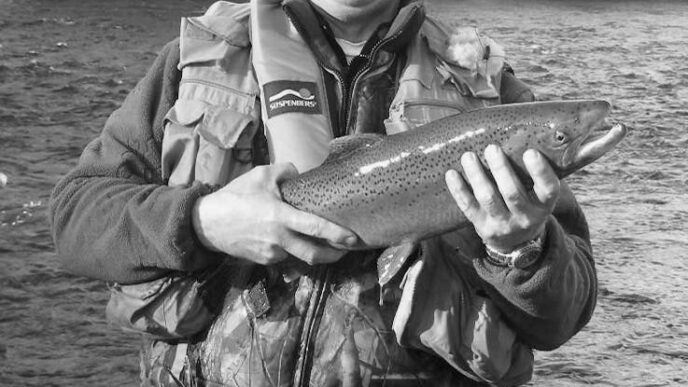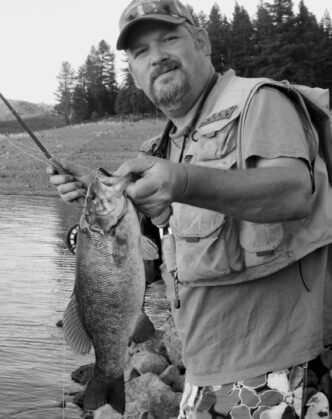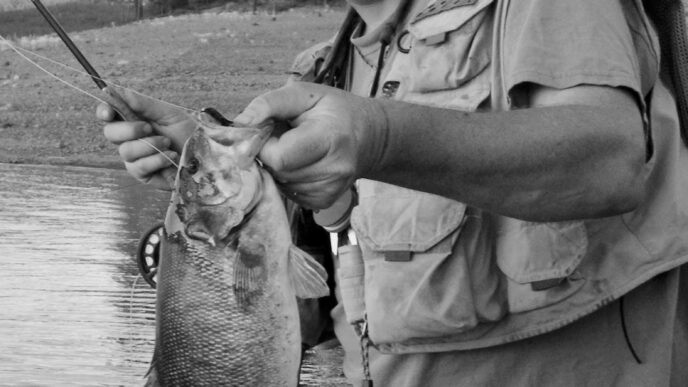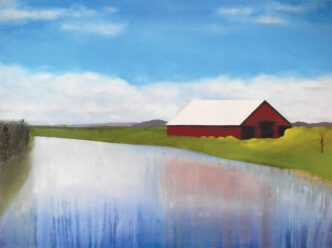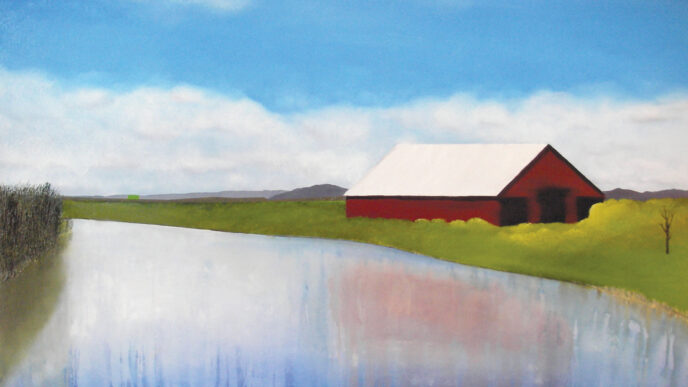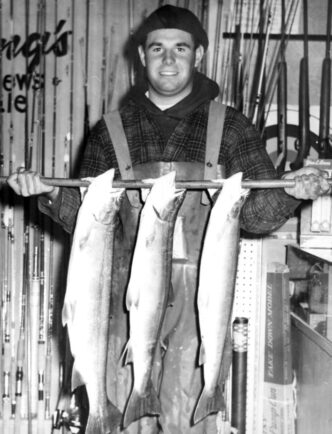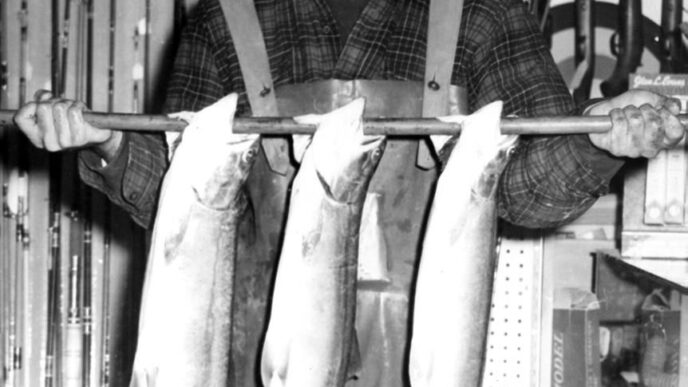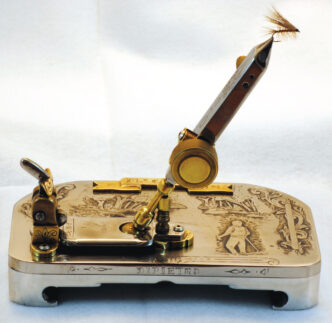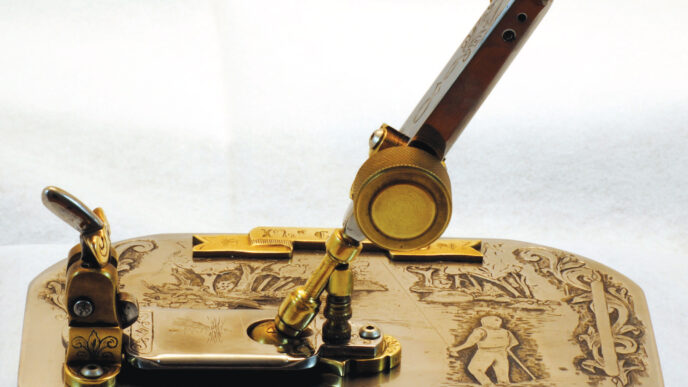Already scans of our original documents fade, metaphorically, pixels that ought to appear sienna dissolving at low-res edges . . . names and titles slip into an obscurity that not even Google archives. We have buried several of the best; few survivors twitter. Too many horde caches of delaminating slides, keep file cabinets full of manuscripts saved on paper, also former baby-wipes boxes jammed with five-and-a-quarter-inch “floppies” that really flex, written in WordStar on Mac Classics using formats now deader than Yugoslavian unity.
We get together at bars in downtown Denver, once a year, or on benches near easy-access pull-outs along rivers the some of our generation helped make famous:
“Remember fat magazines?”
“God, that was a book. Whatever happened to it?”
“Essays? How would I know if anybody’s writing any, if nobody’s publishing?” Ah yes, and when somebody wonders, “Anybody heard from Nick?” they mean “Lyons.”
For Parts I and III of this brief history I leaned on the observations of Paul Schullery and Steve Raymond; for the “phantom” Part II, of course, I sent readers directly to their texts. Now we head into an unchronicled era: “a period of American fly-fishing writing that began in the 1990s, accompanied by huffing and puffing, bursts of color and excited ‘Huzzahs!’ . . . which started to choke, quietly if not quite terminally, soon after the turn of the century . . . an extraordinary time that will likely stand as the richest ever for fly fishing in print. Nobody had seen anything like it before; nobody will again.”
Say what? Says who?
Nobody, yet — I wrote “unchronicled” and meant it. Not only do the nineties, as an era, lack an epitaph, epic or otherwise, it is as yet unrecognized, undefined, even a little embarrassing — part of an inflationary bubble that our sages mutter about. Supposing there was anything remarkable about it, surely now is too soon to know — and, hell, isn’t it hard enough trying to figure out what’s happening today?
Yes. But think — hundreds of new books, perhaps only a few score still in print; a dozen new magazines, many already dead, a few, like this one, thriving even as others remake themselves. . . .
This was and remains “my” era, sort of. While writing toward it I looked forward to reporting what I saw, some of it first-hand, first from a bleachers seat, then later, closer, from “just outside inside,” let’s say. So I’d add a little insight, some nostalgia, Serrano peppers, and — voila! —
“In retrospect, I see it all,” I started, apparently bent on “delivering existential self-analysis with hip irony and humour,” as per a paragraph in Bob Wyatt’s Trout Hunting, a phrase he devotes to my betters in the field. But this was not to be.
Not to be. Halfway through this Meander — by which I mean three thousand words, composed mostly of five false starts — I felt chastened and exhausted, distracted, and, frankly, a little depressed. By then it was clear I’d need at least six more months to think this through. Honestly, so much changed in these years, so quickly…. So much has changed since then that what shocked me most was to recognize how remote that time seems — how . . . anomalous in many ways. Talk about your “paradigm shifts.”
It’s true that 1990 looked little like 1998; nobody at the early end could guess how, well, great things would get. Jump ahead ten years and you’d think a comet had hit. I grope for comparisons to influences such as public education, the transistor, and moveable type. Better or worse — I can’t tell. But . . . different.
Given six months I suspect I’d not make some of the assertions I will below. Better prepared, I’d equivocate even more often, adding buckets of qualifiers, hosts of “most,” “sometimes,” and “with exception.” Consider that done and I’ll spare you the sludge.
Given a year, I’d invite a dozen others to insert their perspectives, make corrections, assert alternatives, and add issues of immeasurable value. . . .
I wish I could, but I can’t, and it’s not just an issue of deadlines. The real issue is this: because it’s my time, sort of, I can’t yet wrap my mind around it all, sort things out. The picture’s too large, too sprawling. Mea culpa maxima. All I can do, perhaps, is help prime a pump —
But you know that feeling you get when you see a pair of big fish approaching you? Surfacing two feet apart as they cruise into casting range. . . .
Not that feeling — the next one, when your chest and shoulders tighten as you realize this isn’t two fish, but one.
That’s the dorsal, There’s the tail — And I am fishing 6X.
For starters, it’s important to get some idea where things were before — or at least the little bit that I knew. The writing of experts and how-tos was never truly my field, but in many ways this part of fly-fishing literature — and in our history, “literature” is what we’ve usually called it — changed most of all, even as it stayed in some ways the same, except when it got worse before it got better.
Last issue I wrote that I entered flyfishing writing through short stories and essays. Wrong. I didn’t mean to deceive, I’d simply forgotten.
I floundered into my first fly-fishing article in 1991, ghost writing a piece that appeared under my source’s name — let’s just call him “My Source.” He also got the check, if there was one, and I paid for gas, booze, and dinner.
This was before the boom — I’ll get to that. It seemed a fair trade when I made it and looks even better looking back. The process illustrated issues an outsider needed to know — facts of life, including one minor conflict around “tradition” and another that’s been rampant since people put pen to papyrus or drew their mark beside another cave artist’s bison. All were especially important for anybody coming from my background.
The short version of that story: A fouled carburetor had kiboshed a fishing trip offered by Humberto del Rio, a gear guide who had asked me, then a journalist, to do a conservation hit piece about the squawfish that were ravaging salmon and steelhead redds on the lower Sacramento River (California Game & Fish, August 1991). Humberto’s engine would take the morning to fix. Meanwhile, Humberto had arranged for me to spend a few hours with an off-duty fly-fishing guide, who wanted to have “a few words” while we angled for shad.
Harsh words, these were, knit into a diatribe against fly-fishing writers, one (1) of whom had fished with him, stolen an original fly pattern, “and put his own (explicative) name on it.”
Never mind that I’d never met any other fishing writer, fly or conventional — had only talked to a few editors on the phone — and that this was just my second time in a boat with a guide, the first since 1973. The man was pissed, had “one of your kind” trapped, and, outweighing me by 200 pounds, was hell bent on carving a couple of mine from living flesh.
We found no shad. In fact, we got nowhere. Midrant, he sucked a rock into the engine of his jet sled. I did not enjoy my first and most frustrating fly-casting lesson ever, when My Source insisted that I use one of his rods, an 8-weight I later learned he’d loaded with a 6-weight line.
I learned that, later, because that morning My Source and I began a friendship that lasted years. This was a particularly unlikely outcome, given the circumstances, including this: When it came to the fly theft that he described . . . I didn’t believe him. I didn’t think he was lying, exactly, but it made no sense to me.
Call my caution “applied ignorance,” an example of how apparently related experience creates a cynicism too clever by far. I came directly from intense adventures in journalism, preceded by five years of technical writing in robotics, among other things. So I asked myself what seemed like a pertinent question: Why would a writer — think here “reporter” — steal from a source? What’s the point? Umpqua had not started paying royalties, as far as I knew, so “follow the money” leads to where? As to fame, or that mantle of “expert. ”
I didn’t get it. Maybe My Source had misread the situation. (As I would learn later, pattern wars can be bitter indeed.) No matter: The ghosted article that I ended up writing was a steelhead how-to that I wrote from My Source’s notes and experience for the “guide issue” of a fair-sized, regional hook-and-bullet rag, RIP. My Source had promised them this piece, and his “editor” — his parish priest — had expressed dismay at his attempt. That sent My Source to my house, hat in hand — a tweed beret — the night before it was due . . . so I tapped it on my Mac Classic while he stood at my shoulder, gurgling and growling “Yes” as he guzzled an entire bottle of (my) Irish Creme.
By the time we were done he was teary-eyed — not with gratitude, so much, but because he so hated to ask me for “a fin” to buy gas money to get home. I donated, after serving him a midnight dinner and three cups of coffee.
Worth every hour, as noted, also each fluid ounce, entrée, dessert, and dollar . . . not because I redeemed my profession, but for what I learned and the directions in which he pointed me —
About experts, in general. And while I use guides as examples in what follows, much of this applies to talented tyers, teachers, shop owners-cum-mentors, also to a host of dedicated “amateurs” who, having devoted lives to innovation and practice, never cared to capitalize or couldn’t.
Add those qualifiers, but it was true then, if a little less so now, that bylines in fishing magazines and books conferred upon writers the ethos of an expert. Most have deserved this status, as I’ve emphasized before, even if it took editors such as Raymond to make their words readable. (A writer rejecting this mantle, I found on a major occasion, could really invite a publisher’s wrath.) What I’m getting at is this: Fly-fishing how-to articles were rarely presented as journalism — a reporter offering objective narration, along with honest attribution. Instead, a fishing writer often ended up looking like the Lone Ranger.
So it had been, probably since the beginning — from back when the best pattern of an aristocrat’s private “fly dresser” was named for the lord of the manor. Never mind that per this tradition Plato would have never mentioned Socrates. Aside from the occasional, conspicuous moral problem, this system made sense — for writers and publishers, anyway. They knew that people read how-to and whereto articles to discover valuable information from a respected source, not to indulge iffy observations from an intermediate, average, or one-time-lucky angler. This also makes dollars: Publishers feature the work of known writers to attract readers who know their names. Publishers often pay more for this work, though not nearly as much as folks think. More importantly, for aspiring wordsmiths, editors may spend more time, which is money, fixing name writers’ drafts.
And, this, ladies and gentlemen, is the genesis of the “old boy” theory of exclusion.
For fishing guides, however — for My Source, at least, and I think for angling experts of all kinds — this tradition was wearing thin, maybe feeling a tiny bit classist. Long portrayed as rod bearers, boat rowers, fish landers, and lunch cookers — it wasn’t until 2004 that the International Game Fish Association began identifying the guides whose clients landed world record fish — the (admittedly few) guides I knew tended to chafe at their relative obscurity. In short, Kimosabe, not every “Tonto” was a happy camper.
(One guide, my friend Don Johnson, actually sat me down to hear an audio tape on which three well-known writers talked about what they expected from guides, including a fellow who said something perilously close to “He should just row the damn boat where I tell him to — I’m the one who knows what to do.”)
Honestly though? When you get down to it, most of the time? It wasn’t the writer to blame. He wasn’t the problem, and this conflict did not dominate the magazine or book world, so please don’t think that. The real issue was elemental to any society where literacy reigns.
Framed in a phrase: You don’t find Dave Hughes on every corner. Or Roderick Haig-Brown, or Joe and Charlie Brooks, Charlie Waterman, Doug Swisher, or Bob Natasi. It just doesn’t happen. Whatever the endeavor, experts do what they do well . . . and unless they’re also expert writers — or highly visible somehow, or the subject of writers — they don’t often get due credit. True: Everybody knows how to write . . . but few forms of expertise automatically translate into words ready for print. (And as Raymond reminded us, even pros remain so deficient that they “could barely write their own laundry list” without an editor’s help.)
That is what really baffled My Source, his editor, and generations of others. In fly fishing, many of these experts couldn’t care less, of course — or didn’t until . . . wait . . . if you think I’m going to write “Internet” pack a snack. . . .
Until Boomtime — that era to which I would pen a paean.
Boomtime — I must repeat that. For the economy, the sport — and a sonic boom for a fly-fishing industry serving hundreds of thousands of acolytes and converts.
“Nobody had seen anything like it before. ”
It’s a tradition to credit this explosion to A River Runs Through It, screened in 1992. Some folks, including Schullery, put it earlier, beginning when the Baby Boomers began looking for outdoor activities worthy of their time. But nobody argues against the obvious — that soon after Pitt got his pants wet, thousands of new and old fly fishers proved themselves eager and able to buy what they wanted, needed, or maybe what they guessed would look good. (“Soft goods,” became the mantra of one shop owner I knew. “Soft goods and lots of turns.”)
To purveyors of goods, this meant hundreds of millions of reasons to advertise, a mighty tide that floated the few boats of fly-fishing magazines. Even better, the newbies needed lots of information, and better still, like the veteran fly fishers they hoped to become, these tyros were literate company, ready subscribers and eager consumers of books.
To meet these demands fly-fishing publishing expanded in half a dozen directions at once. Or so it seemed to me: How-tos and primers came out in schools, by scores, from old houses and new. New magazines spawned, a few on the national scene, committed to waters warm and salt or streamed to species, others dedicated to regions and states or specifically aimed at tyers.
Call it foolish — many did. However, the bubble analogy is just too round. Better, to my mind, is another more awkward: that of an inflated latex glove, digits swelling out from the palm. Here’s the how-to thumb, and next, the where-to pointer, followed by fly tying and fly indexes, then come rings of essays, and finally — ever the pinkie — a fair-sized fiction appendage.
Or that’s how I saw it, sometime after falling into ringside seats, first as a columnist, right here, in 1992, then as a book author in 1996 and, beginning a year or two later, as “Books” editor for Fly Rod & Reel. While that many years in fly fishing is only a marginal pedigree, here’s what I saw, as I saw it:
Great books got published, including many small treasures that might never have seen print, save for raging-bull confidence, and classics got reprinted. Some of both received classy treatment, issued in short runs of leatherbound collectors’ copies, in hardcover editions that actually sold, then on into trade paperback. At the same time, the need to fill new niches led to dozens of soft-cover books bursting with four-color photos — brilliant.
Or . . . not. Many of these came from first-time writers, working almost for free, who didn’t realize they needed editing — that every pro needs editing — and so got none. The results . . . on the one hand, experts (or expert photographers) were getting to market, where they might find recognition. On the other hand . . . errors or lack of editing could quickly turn pearls into pea gravel. “Reading this chapter about trout biology,” read one of my favorite reviews, “should preclude you reading the rest of this book.” Lines like that lent many of these works the lifespan of mayflies. . . .
Still, the books came, and came, and came. It baffled me when the mediocre, well-marketed, did well. What bothered me, however, was how many gems were ignored, sometimes for want of a recognizable name, more often from lack of money, reviews — or luck. Seeing these fail directed my own review policy, occasionally reviled by notables: no cheap shots from the bully pulpit — no pointlessly negative reviews, no matter how clever they make you sound. (And if that sounds anything like an apology, it ain’t.) Even so, every year I watched quality books die on the shelves for lack of mention.
And then….
Times up. It’s spring, almost; I have fly boxes to fill. Nevermind that the Internet had little to do with the near-naked choke of our literature that came soon afterward — the fact that success strangled parts of publishing. That, along with a process that players confidently called “maturing the industry,” as if it wouldn’t mean wrinkled, fat, forgetful, and cranky . . . .
That’s for Parts V through XI.
As for My Source?
He called me a couple of days after our piece went to his editors. He was laughing.
“You’ll never guess what happened! They loved it, man!”
“Cool.”
“No, man. They loved it. And listen to this: they asked me to write a column.”
“They did?”
“No shit. And — you’ll really love this part —”
“No, no, no —”
“— I said ‘Yes!’ ”
And I’m thinking, where’s a priest when you need one?






